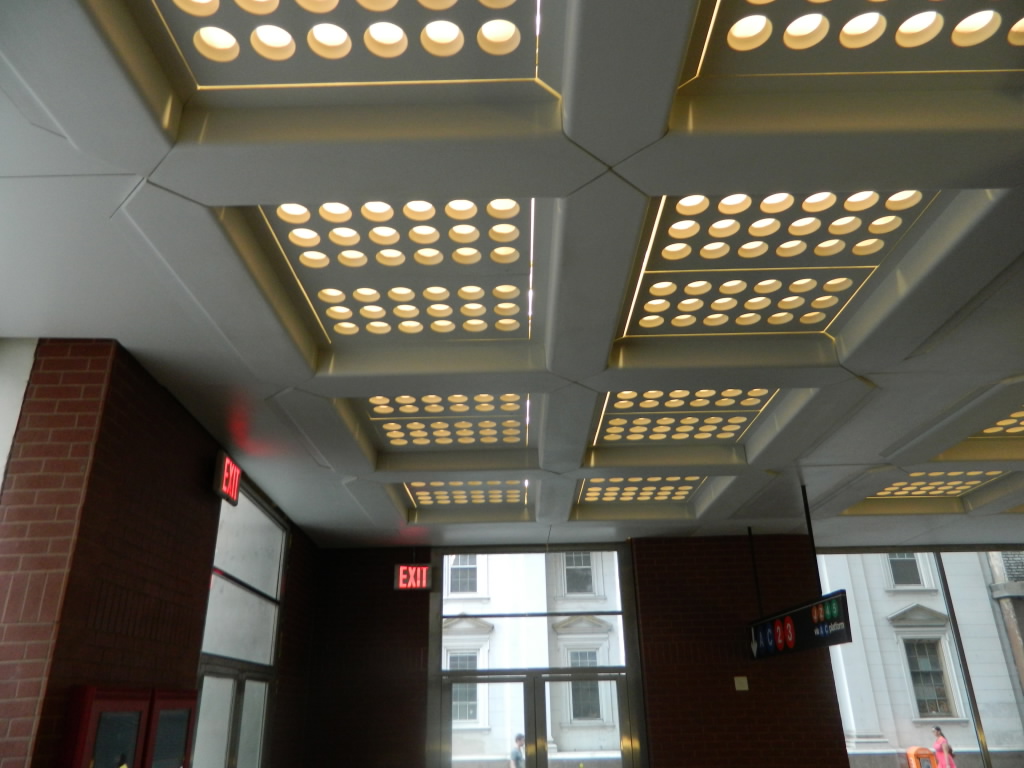GFRC Info: Historic Restoration and Replication of Terra Cotta and Stone Facades with GFRC and Architectural Fiberglass

Fulton Street Subway, NYC, NY
Terra Cotta and Stone Facades Lose Their Grip as They Age
New York City has some magnificent old buildings. On occasion, the age of these buildings causes problems. On rare occasions, some part of these buildings poses a public health and safety risk. Generally, a law or regulation is enacted to address these problems. In the case of terra cotta and stone facades, some of them have dropped off the buildings and hit the ground below. In one case, a young woman was killed by a portion of such facade striking her. In response, New York enacted LL10/80 and LL 11/98.
What are LL10/80 and LL11/98?
After the pedestrian was killed, LL 10/80 was passed. It required all building facades facing pedestrian walkways to be inspected by a licensed architect or engineer every five years. Local law 11/98 was passed to correct some oversights in LL10/80. The first law stated that any wall 25 feet or more from a public walkway did not need to be inspected. Under LL11/98, all building walls have to be inspected if they are more than seven stores tall. Buildings that are six stories tall but have a basement or cellar must also be inspected.
The Culprit: Weather
Over time, snow, rain, and ice work their way into the cracks and joints in terra cotta and carved stone facades. The caulking fails to keep the elements out as it ages. Mortar is washed away by the water exposing the steal anchors to the elements. These rust out, leaving the facade with no support. Down it comes, right onto someone walking by.
The Cure: Stromberg Glass Fiber Reinforced Concrete
Replacing such a facade is difficult. The old, failing facade must be removed and the surface under it repaired. Then a new facade must be fitted. Often, the material the original facade was made from is no longer available. Even if it is, the facade would be heavy and hard to place on an older building that may suffer under the weight.
Stromberg Glass Fiber Reinforced Concrete can solve these problems. It is:
- Light
- Durable
- Can be cast to precisely replicate the look of the facade
- Is accepted by most restoration specialists
- Easier to install
Want Proof? Stromberg GFRC has been used on these projects in NYC:
- Planet Hollywood, New York; GFRC panels, sculpture
- Hershey Times Square; GFRC brick face panels, trim, limestone GFRC
- Empire State Building; Interior GFRC limestone restoration panels
- Fulton Street Subway; GFRC ceilings, sculpted shapes, panels, columns
- World Trade Center Site; GFRC sculpted shapes, ceilings, panels
- New York City Transit Center; GFRC ceilings, columns, panels
- Tommy Hilfiger; GFRC panels and cladding
Stromberg GFRC can be used to:
- Replicate terra cotta facades
- Replicate stone facades
- Replicate masonry
- Comply with historic preservation rules
For More Information on Stromberg GFRC:
To have an LL11/98 inspection, contact a professional architect or engineer for the inspection.
To replicate failing terra cotta, stone, or masonry, contact Stromberg Architectural Products or call (903) 454-0904. Our design professionals are here to help and the initial consultation is free.
To read Section 32-03 of Title 1 of the Rules of the City of New York:
§32-03 Periodic Inspection of Exterior Walls and Appurtenances of Buildings


October 28, 2011
GFRC Information